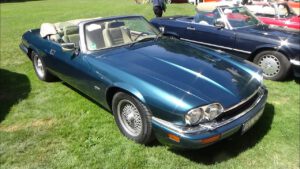
Producing 7.8 million cars and commercial vehicles, Toyota claimed the title of the world’s largest vehicle manufacturer in 2009. It was renowned for its pioneering role in hybrid technology. The sales of the hybrid model Prius commenced in Japan in 1997, expanding globally in 2001. The Prius, equipped with both a gasoline and an electric motor, incorporated an automatic energy management system to ensure optimal propulsion based on the driving situation.
In the same period, vehicles integrated more electronics and assistance systems, the incorporation of multiple camshafts, valves, and lightweight construction contributed to heightened engine performance and reduced weight. Notably, the Audi A8 introduced the first production-standard self-supporting aluminum body, enhancing both performance and efficiency through reduced weight.
The 2000s also witnessed a sharp increase in crossover models, with Suzuki introducing the compact Wagon R+ and expanding its lineup with vehicles like the seven-seater SUV Grand Vitara, new versions of Swift and Alto, and the crossover SX4 – blending off-road aesthetics with the handling and operating costs of conventional cars.
In response to stricter emission and consumption regulations, manufacturers globally turned to small cars designed for 2 to a maximum of 4 people. Some focused on designing tiny city cars with 2 or 3-cylinder engines, while others built compact cars with economical, less stressed four-cylinder engines suitable for longer and faster drives. The Smart City Coupé, conceived by Swatch inventor Nicolas Hayek, emerged as the most popular two-seater city car, featuring rear-wheel drive, electronic stability control, and an anti-lock braking system.
This era concluded with the 2007-2009 economic crisis, causing a substantial downturn in global automobile demand, with sales hitting a three-decade low in 2011.








